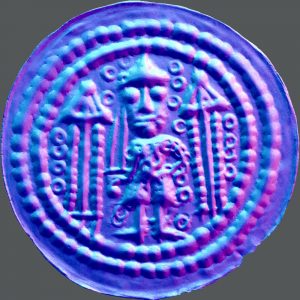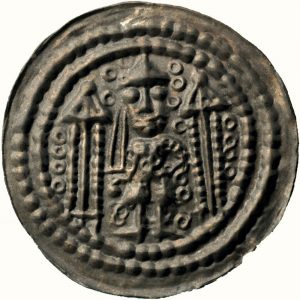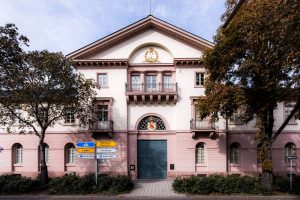Weekly World Numismatic News for December 5, 2021
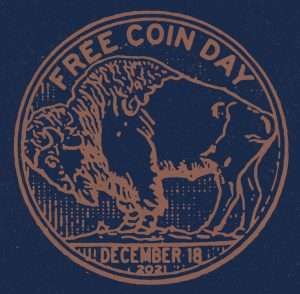 After a bit of a hiatus, the Coin Week podcast resumed with a discussion of Free Coin Day. Free Coin Day encourages dealers to give away one coin to every customer to celebrate coin collecting.
After a bit of a hiatus, the Coin Week podcast resumed with a discussion of Free Coin Day. Free Coin Day encourages dealers to give away one coin to every customer to celebrate coin collecting.
Free Coin Day was founded by Coin Week’s editor Charles Morgan and joined this year by Rob Oberth of Round Table Trading. Both are members of the ANA Board of Governors. They encourage those participating in Free Coin Day to use the hashtag #FreeCoinDay to help promote the venture.
While Free Coin Day is a good idea, it is preaching to the converted in many ways. It requires someone to be motivated to walk into a coin shop to participate. Unfortunately, there are fewer brick-and-mortar shops, and most dealers are either working shows only or selling online, and access to dealers is limited.
While Oberth and Morgan have the beginning of a good idea but it does not go far enough. New collectors want experiences, and their collections represent something about their experiences.
Other collecting industries learned this the hard way. During the market downturn of 2008, most industries retrenched and figured out a way to revive old hobbies. The comics industry was not as vibrant. The idea of changing the industry beyond the paper book was not something the publishers wanted to do because it was the lifeblood of the industry.
The publishers realized that paper-based products were on their way out. The industry diversified with ancillary products, including movies, modern stories, collectibles, and experiences. One of the attempts to expand their reach was to embrace the existing ComicCons. The publishers poured more money into the ComicCons and used the larger Cons to launch products.
During the podcast, Oberth and Morgan all but dismiss the ideas learned from the comics industry. Rather than trying to figure out a way to make coin collecting an experience, they are giving away low-end coins trying to entice distracted Millenials and GenXers into coin shops.
And now the news…
 → Read more at smithsonianmag.com
→ Read more at smithsonianmag.com
 → Read more at starherald.com
→ Read more at starherald.com
 → Read more at the-sun.com
→ Read more at the-sun.com
 → Read more at bbc.com
→ Read more at bbc.com
Weekly World Numismatic News for February 3, 2019
Sorry for being late, but there was this boring football game on. And the commercials stunk, too!
A story that resonated with me was from the American Physical Society that discussed research being done in Germany that could digitally examine coins.
Currently, the research is using ancient coins stored by their local heritage society. The purpose is to aid in the identification of the coins and to maintain an accurate description of these coins.
Although there have been similar attempts including smaller programs, this appears the first attempt to use computer imaging on a large scale to analyze the characteristics of coins. If it is successful, the imaging can also be used to determine the grade of coins.
- The coin as it appears without digital enhancement
- When the coin is imaged, the imaging software analyzes the surface to highlight its features
- A computer representation of the coin as it might have looked when it was originally struck.
Yes, I am saying that computers can do the grading of coins and probably do a better job than humans.
Computer imaging has come such a long way that it is an enhancement to almost everything that requires visual work. Nothing is more impressive than the system that uses medical imaging to virtually recreate a surgery scene so that a doctor and team can practice the most delicate surgery before cutting open the patient. Imaging can see beyond blood, organs, and even ordinary body fat to guide instruments through the body allowing for minimally invasive surgery.
Those of us with a smart telephone in our pocket that was purchased within the last three years has a device with the imaging capabilities and computing power that is equivalent to those used in those medical situations.
We can perform medical miracles, detect people from satellites thousands of miles in space, and even capture clear images of someone committing a crime with a phone from your pocket but the numismatic industry pedantically resists the use of computer imaging to grade coins.
The problem is that computer imaging will disrupt the status quo and make the grading services nearly obsolete if it was an acceptable way of analyzing coins. Dealers would lose their advantage of being the experienced eye looking at coins.
The result will be a consistency in coin grading that is not available today.
Think about it. There would be no need for crossovers, crack-outs, or a fourth-party sticker service that is nothing more than an arbitrage system to drive prices up. Collectors would be in control. Take out your phone and scan the coin. It will tell you the grade. And it will be the same grade whether I do the scan or if you do.
Computers do not like. Computers do not have emotions. Computers do not have an agenda. Take the picture, analyze, and provide a result. It puts the power in the hands of the collectors.
Of course, putting the power in the hands of the collectors is not what the dealers want. It is not what the grading services want. Computer imaging will disrupt their business.
And now the news…
During school field trip, student finds coin bearing the inscription "King Agrippa."  → Read more at israelnationalnews.com
→ Read more at israelnationalnews.com
At the same time, the number of fake banknotes has dropped.  → Read more at spectator.sme.sk
→ Read more at spectator.sme.sk
The County  → Read more at thecounty.me
→ Read more at thecounty.me
The massive medallion, made of the purest gold bullion ever refined and worth $5.8 million, was stolen from the Bode Museum in Berlin—and has never been found  → Read more at macleans.ca
→ Read more at macleans.ca
A new exhibit at a landmark Vermont museum showcases the work of a renowned artist who calls New England Home. In his Windham County workspace, Johnny Swing transforms quarters, half dollars, and other…  → Read more at nbcboston.com
→ Read more at nbcboston.com
Countless historical coins that differ from each other only in details are in storage at German state museums. Unlike paintings, these archaeological artifacts may not be labeled, marked or barcoded. Researchers at the Fraunhofer Institute for Factory Operation and Automation IFF developed a scanner and analysis software in collaboration with the Saxony-Anhalt State Office for Heritage Management and Archaeology, which digitally capture the visual features of coins and describe them exactly in a matter of seconds. The scanning system can be used to identify and recognize coin finds.  → Read more at phys.org
→ Read more at phys.org
January 2019 Numismatic Legislation Review – Welcome to the 116th Congress
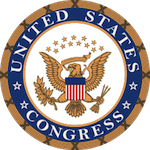 At noon on January 3, 2018, the 116th Congress gaveled into session. The first day of a new congressional session is mostly ceremonial and procedural. Leaders are chosen. Rules are established. Committees are formed. And the House of Representatives gets to work on a new budget.
At noon on January 3, 2018, the 116th Congress gaveled into session. The first day of a new congressional session is mostly ceremonial and procedural. Leaders are chosen. Rules are established. Committees are formed. And the House of Representatives gets to work on a new budget.
Usually, the budget the House starts with is for the next fiscal year. This year, the 115th Congress did not finish their work and left the government unfunded. It does not matter whose side you are on or what animal you worship, the bottom line is that 800,000 federal employees, many more contractors, and the businesses that rely on their patronage were hurt. Sure, the federal employees will earn back pay but the contractors who were furloughed will not. The businesses that serve these people will also not be made whole.
But that did not stop members of Congress from submitting bills for consideration. As I write this, there have been 842 bills submitted in the House of Representatives and 268 in the Senate. Of those bills, only four have numismatic significance. All four bills were also submitted in the 115th Congress but had died in committee when that Congress adjourned for the final time.
As of now, the Financial Services Committee, chaired by Rep. Maxine Waters (D-CA), has not posted the rules as to what it will take for numismatic-relation legislation to move forward. Since the 112th Congress, the committee required a numismatic bill to have 250 co-sponsors. But since the control of the committee has changed parties, we will have to wait until the committee publishes their rules.
Here are the first four numismatic-related bills submitted in the 116th Congress:
H.R. 61: Carson City Mint 150th Anniversary Commemorative Coin Act of 2019
H.R. 500: Christa McAuliffe Commemorative Coin Act of 2019
H.R. 636: To require the Secretary of the Treasury to mint coins in commemoration of Muhammad Ali.
S. 239: A bill to require the Secretary of the Treasury to mint coins in recognition of Christa McAuliffe.
It was wurst than I thought
After my last post about the Staatliche Münze Berlin, the Berlin State Mint, a few German readers provided a lesson in the political structure of Germany to understand the institution’s role in the country’s coin production.
Unlike what I wrote previously, the Berlin State Mint is a government mint but for the government of the Federal State of Berlin.
Berlin is one of two cities that is also designated as a state. The other is Hamburg. The divisions trace back to the many small states that existed in the region during the days Holy Roman Empire. In short, it was an attempt to bring unification to the region by attempting to allow each smaller states, kingdoms, principalities, cities, etc. to provide their own rule for the common good. Some reference suggests that there were over 300 individual governments with their own governing rules at the height of the Empire.
Arguments, wars, and Napolean brought about many changes where many of the smaller states merged into larger ones and others changed by conflict. Following the Treaty of Versailles that ended World War I, Germany was forced to give up territories that left the current state boundaries were mostly set as they are today.
Although the Third Reich tried to unify the country around a federal government, there were a number of administrative functions left to the states including the minting of coins and printing of currency. Even Adolph Hitler learned that to keep his version of an orderly government, he had to work with each of the states.
Following World War II, the concept of the confederation of states continued with the formation of the Federal Republic of Germany (West Germany) and the German Democratic Republic (East Germany). Although the federal government has evolved with more central power, the states continue to have a degree of independence in their operations that a person with a background in United States history would consider a confederation.
As the country evolved and times mandated change, many of the mints were closed. Production consolidated with the changes in the political structure of Germany. Following the unification of Germany in 1990, only five state mints remained:
- A: Staatliche Münzen Berlin, the Berlin State Mint (www.muenze-berlin.de)
- D: Staatlichen Münzen Baden-Württemberg, State Mint of Baden-Wuerttemberg, Munich (www.mintbw.de)
- F: Bayerisches Hauptmünzamt, Barvarian Main Mint, Stuggart (hauptmuenzamt.bayern)
- G: Staatlichen Münzen Baden-Württemberg, State Coins Baden-Wuerttemberg, Karlsruhe (www.mintbw.de)
- J: Hamburgische Münze, Hamburg Mint (muenze.hamburg.de)
NOTE: First letter on the line is the mintmark associated with the mint.
- Berlin State Mint
- State Mint of Baden-Wuerttemberg, Munich
- Barvarian Main Mint, Stuggart
- State Mint Baden-Wuerttemberg, Karlsruhe
- Hamburg Mint
When the euro was introduced, German law mandated that the minting of the euro coins would be distributed evenly among the five mints. Any production beyond the federally mandated requirement to produce the euro is between the mint and the Finance Minister of the state.
As for the currywurst coin, although it is produced by the Berlin State Mint, it is a product of that mint and not a product endorsed by the German federal government.
If you are confused you are in good company. Even after spending parts of three days looking into the history, I am not sure I am right. It is more confusing than the structure behind the U.S. Mint!
Weekly World Numismatic News for January 27, 2019
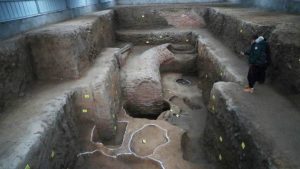
Archaeologists found fragments of ceramic coin moulds at the site when they were carrying out repairs after heavy rain in late 2017.
(Photo: South China Morning Post)
With only a portion of the facility excavated, the archeologists found nine areas that could have been used as part of coin production. There was one kiln site that was likely used to create porcelain coin molds and eight ash pits. They also found copper coins, coin mold fragments, and other items that were used as part of the coining process.
The China Numismatic Society told news sources that the inscriptions on the molds date the facility to 9-23 AD and corresponds to the reign of Wang Mang of the Han Dynasty.
Finds like this shows how the use of money and numismatics can lead to better understanding of societies what may have been lost.
And now the news…
It’s been dubbed one of the loveliest coins ever minted and, almost two centuries after it was struck, it’s making headlines again. A rare gold five pound coin, featuring an idealised image of Queen Victoria in the early years of her reign, has sold for a six-figure sum at a private auction.  → Read more at royalcentral.co.uk
→ Read more at royalcentral.co.uk
Archaeologists discover fragments of ceramic moulds, copper coins and a kiln site where an ancient government office once stood  → Read more at scmp.com
→ Read more at scmp.com
“There used to be this thing called money,” people will say in the future. And children will laugh. “You’re joking,” they’ll say.  → Read more at bostonglobe.com
→ Read more at bostonglobe.com
Secret Service members are reportedly exchanging challenge coins that take a jab at the ongoing partial government shutdown.  → Read more at thehill.com
→ Read more at thehill.com
The best-known U.S. Mint building in San Francisco is at Fifth and Mission streets, right across the street from the Chronicle building. The Old Mint is an imposing classical structure, but it’s been retired as a money-making plant for more than 80 years. By the early 1930s, the building was too antiquated to meet the increased demand for coins. So the U.S. Treasury found a second location, at Duboce and Buchanan streets, where a natural rock promontory could function as another layer of security. A search through The Chronicle’s archive uncovered photos of the construction of the New Mint in 1936, as well as the coin production work happening inside.  → Read more at sfchronicle.com
→ Read more at sfchronicle.com
The Royal Canadian Mint has uncovered the identity of the soldier who inspired its new silver dollar coin, which commemorates the sacrifice of Canadian soldiers on D-Day.  → Read more at cbc.ca
→ Read more at cbc.ca
A 10-year-old Indian boy who lives in Oman has collected more than 500 coins from across 120 countries.  → Read more at timesofoman.com
→ Read more at timesofoman.com
It was for the wurst
While the story about the currywurst commemorative coin seemed like something to poke fun at, I was reminded that Staatliche Münze Berlin, the Berlin State Mint (www.muenze-berlin.de), is not an official government mint. It is a private mint that has been contracted by the German government to assist in producing coins. Their website reports that they produce one-fifth (20-percent) of all German coins.
Reports suggest that the Staatliche Münze Berlin has been under contract to Latvia to produce legal tender coins since 2014.
It appears that Staatliche Münze Berlin would be to Germany as the Pobjoy Mint is to the United Kingdom. Both a private mints that are contracted to strict legal tender coins that create their own commemorative.
This might mean we are safe from coins commemorating poutine and haggis. However, the idea of mixing curry with ketchup may be worth a try!

